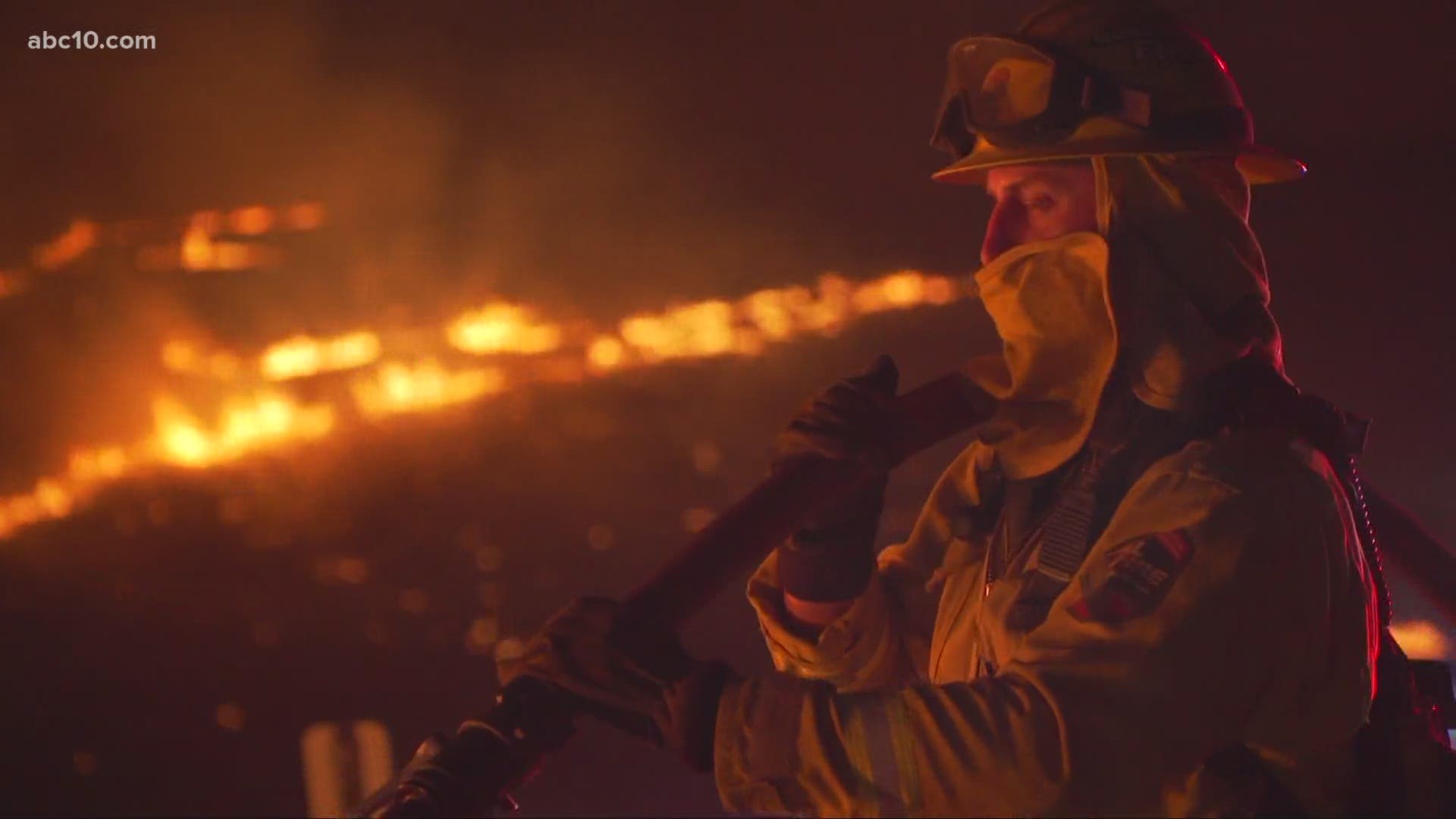SAN MIGUEL, California — With Cal Fire resources stretched thin due to a massive surge in wildfires and a staffing drawdown due to the coronavirus pandemic, officials with the California firefighting agency say the National Guard's role is critical this year.
“We went ahead and stood up, activated the National Guard to participate in our firefighting efforts,” said Captain Sean Sunahara.
The military fire crews just completed a three-day wildland fire training with Cal Fire officials at Camp Roberts in San Miguel, Calif. These military firefighting crews undergo two days of classroom training and one day in the field.
“This has been vital to the success we have for our mission," Sunahara said.
12 captains and 24 firefighters with Cal Fire are embedding and providing leadership. They will team with 12 California National Guard wildland fire hand crews comprised of 20 soldiers each.
Lieutenant Colonel David Chang is the Taskforce 203 commander, the group of soldiers being trained to deploy to fire lines this week.
Crews learn the basics of wildfire safety, how to draw fire lines, conduct mop-up work, brush clearing, and how to lay fire hoses. All of these skills are critical in helping Cal Fire.
Another group of 300 soldiers will arrive at Camp Roberts next week to begin their training. If necessary, Cal Guard can provide as many as 1,200 soldier firefighters to assist Cal Fire's 6,200 personnel.
Sgt. Marty Flores of Stockton is a part of one of the first hand crews that will deploy. He says he is ready to serve communities across the state.
“Pretty exciting, that’s what we signed up for and I mean that’s what we’re here for,” Flores said. “To help out our communities, to help everybody, to protect anyone that needs our help.”
In previous years, Cal Fire called on as many as 2,200 fire-line qualified prisoners to help in firefighting efforts. However, the coronavirus pandemic has delayed training.
The California National Guard’s Taskforce Rattlesnake, a permanent group of 200 military firefighters, has also been helping the state’s wildfire prevention efforts through fuel reduction. Crews have been working throughout Northern California to clear brush that can lead to devastating wildfires.
“It makes me feel proud," said Cal Guard Major Robert Langston. "And because when you see the smoke, because we can see the smoke in the Sacramento, you can know your guys are working the fire."
Seven of the 10 crews in the taskforce immediately transitioned to fire suppression when fires broke out across the state, Langston said. A crew from Auburn began battling the Jones Fire which broke out near Nevada City on August 17.
Once crews are deployed after training, they typically serve one month on the fire lines.

